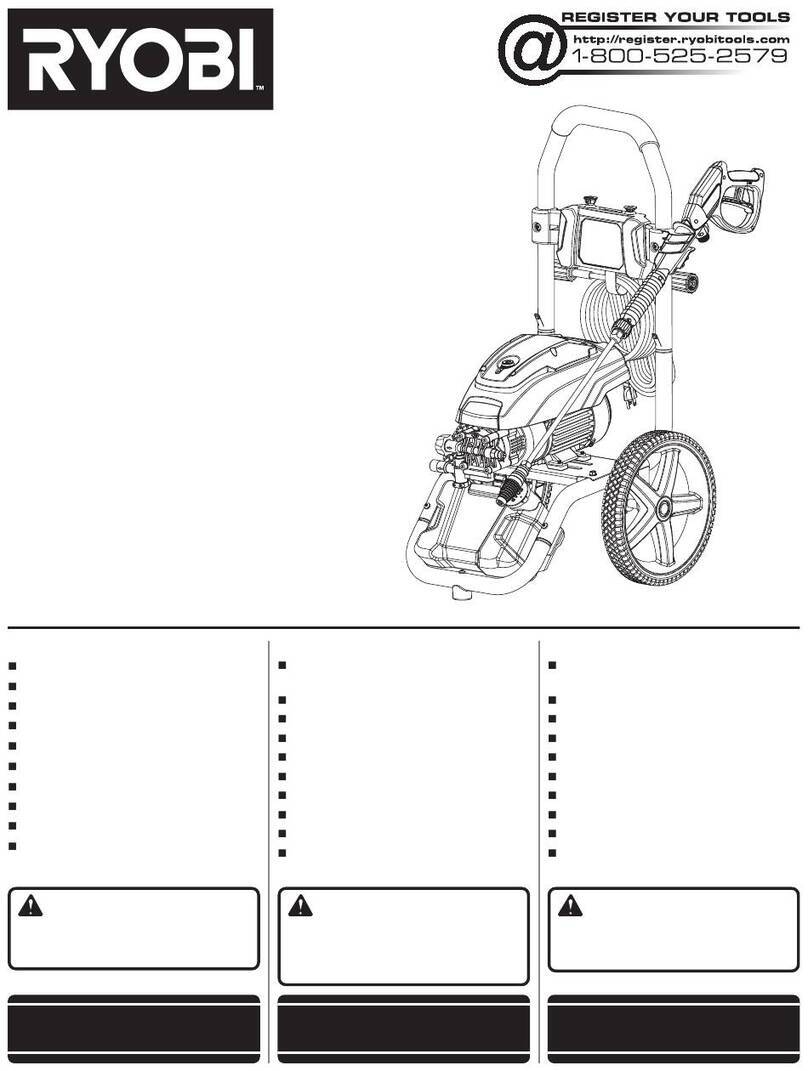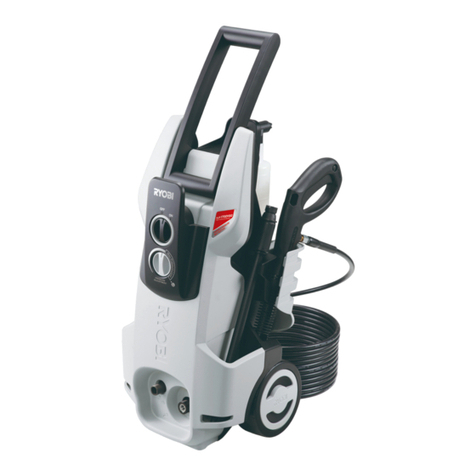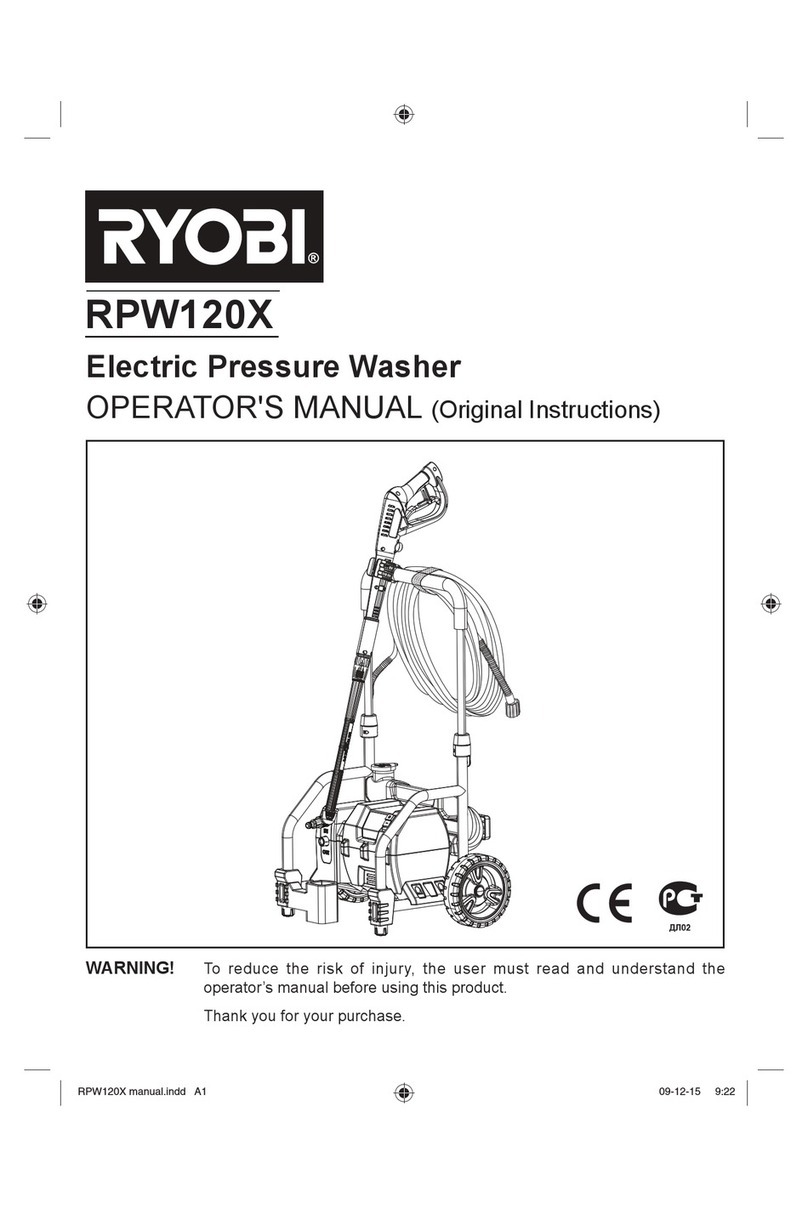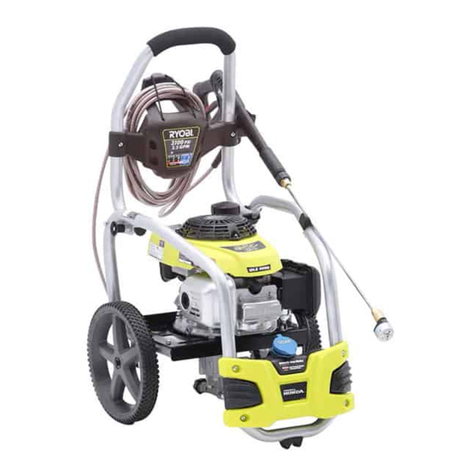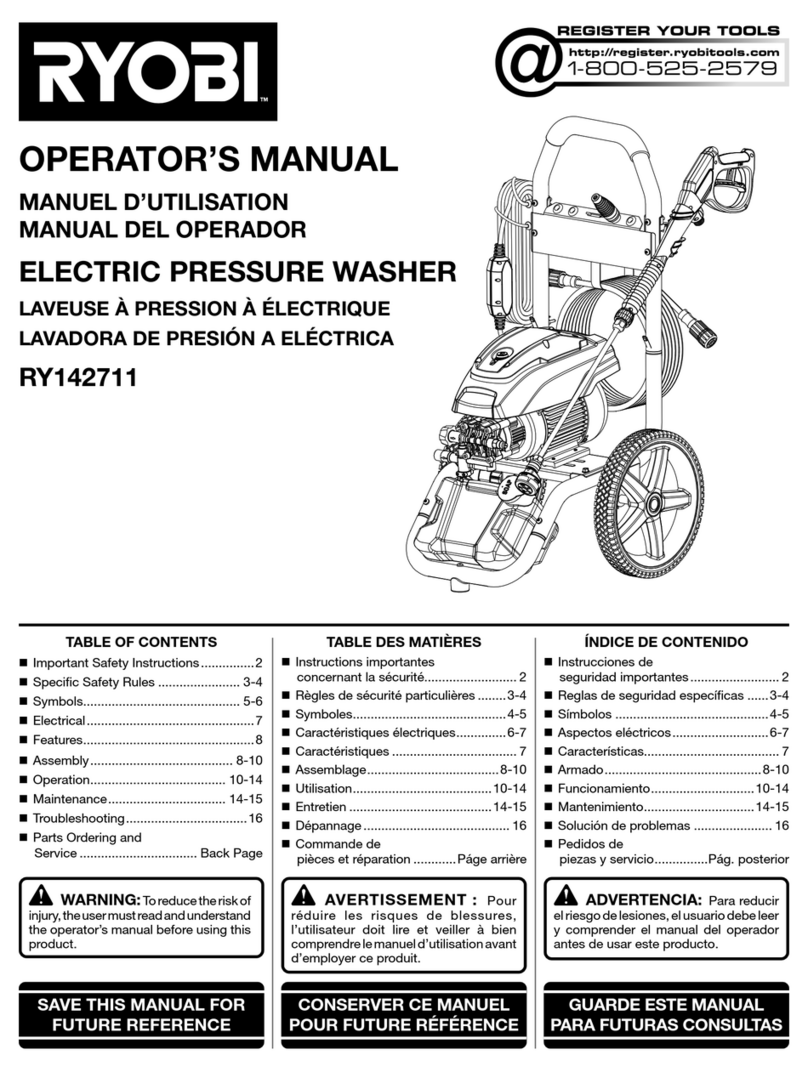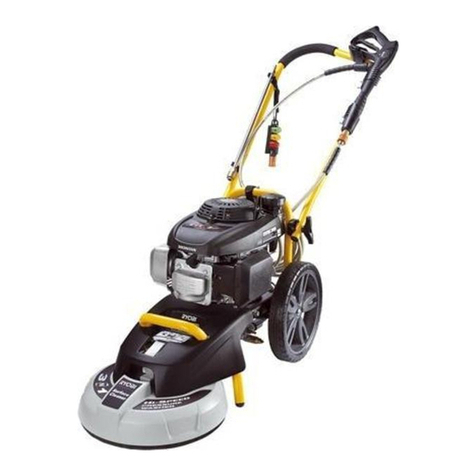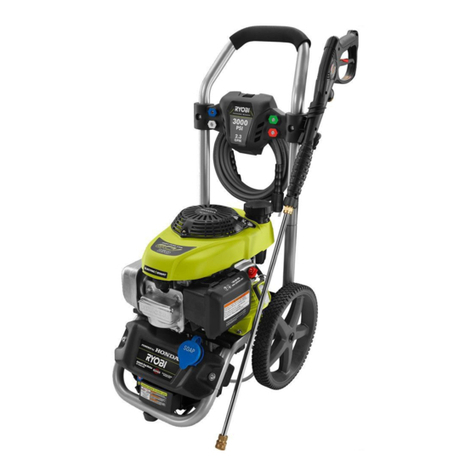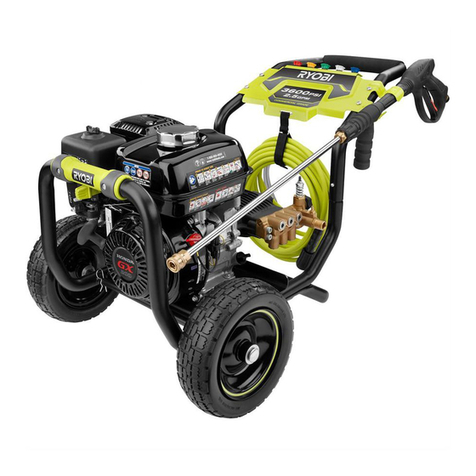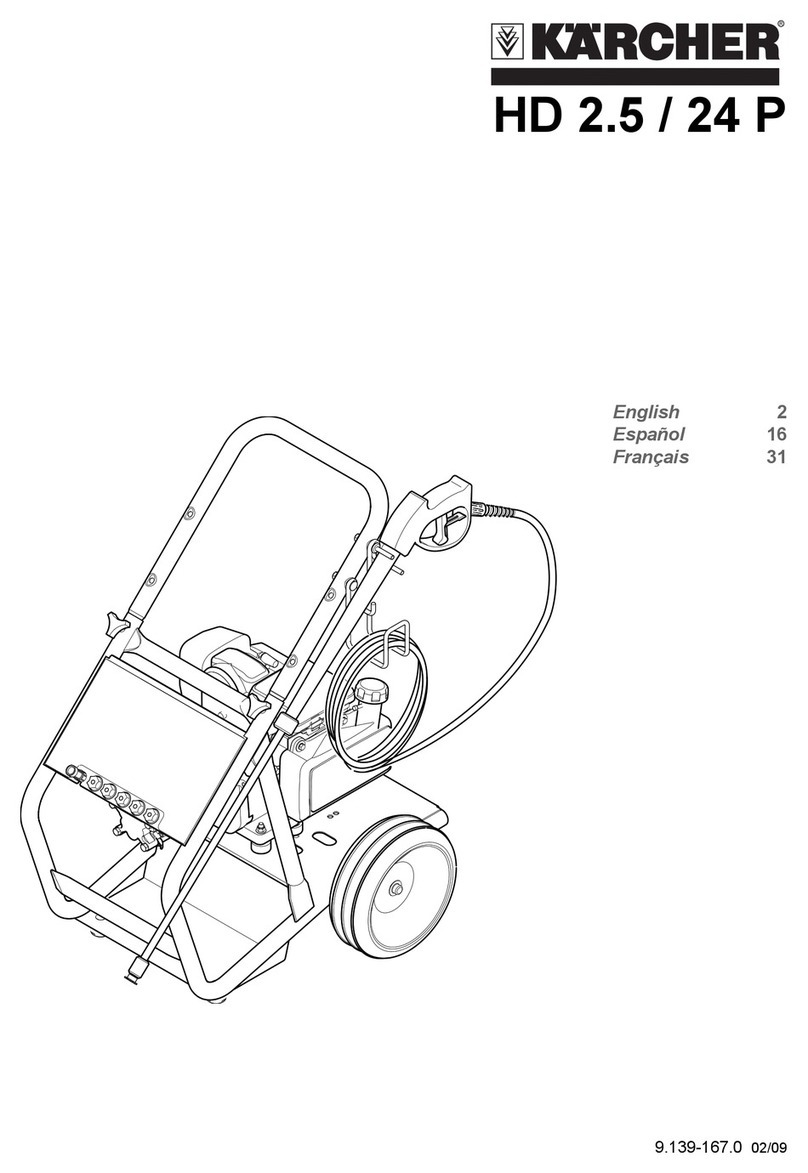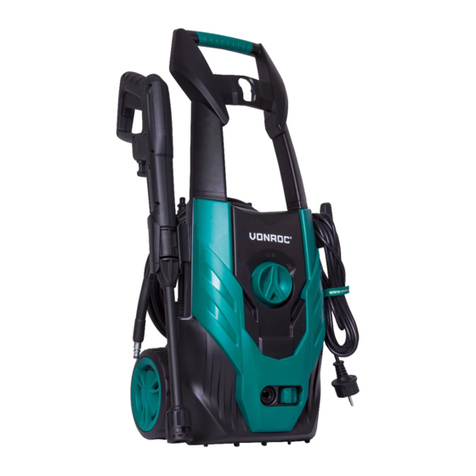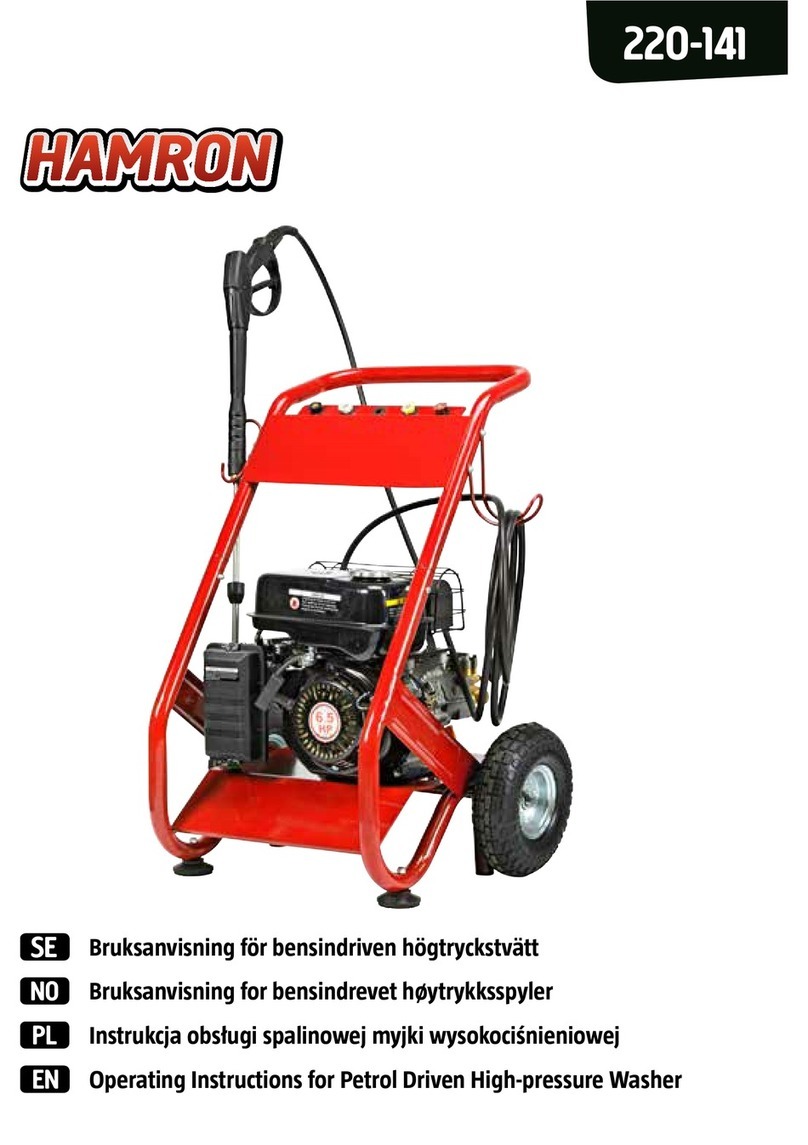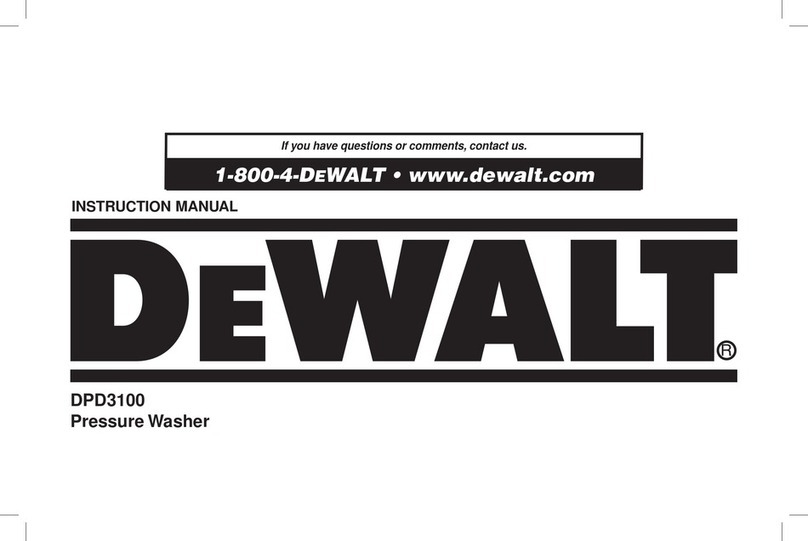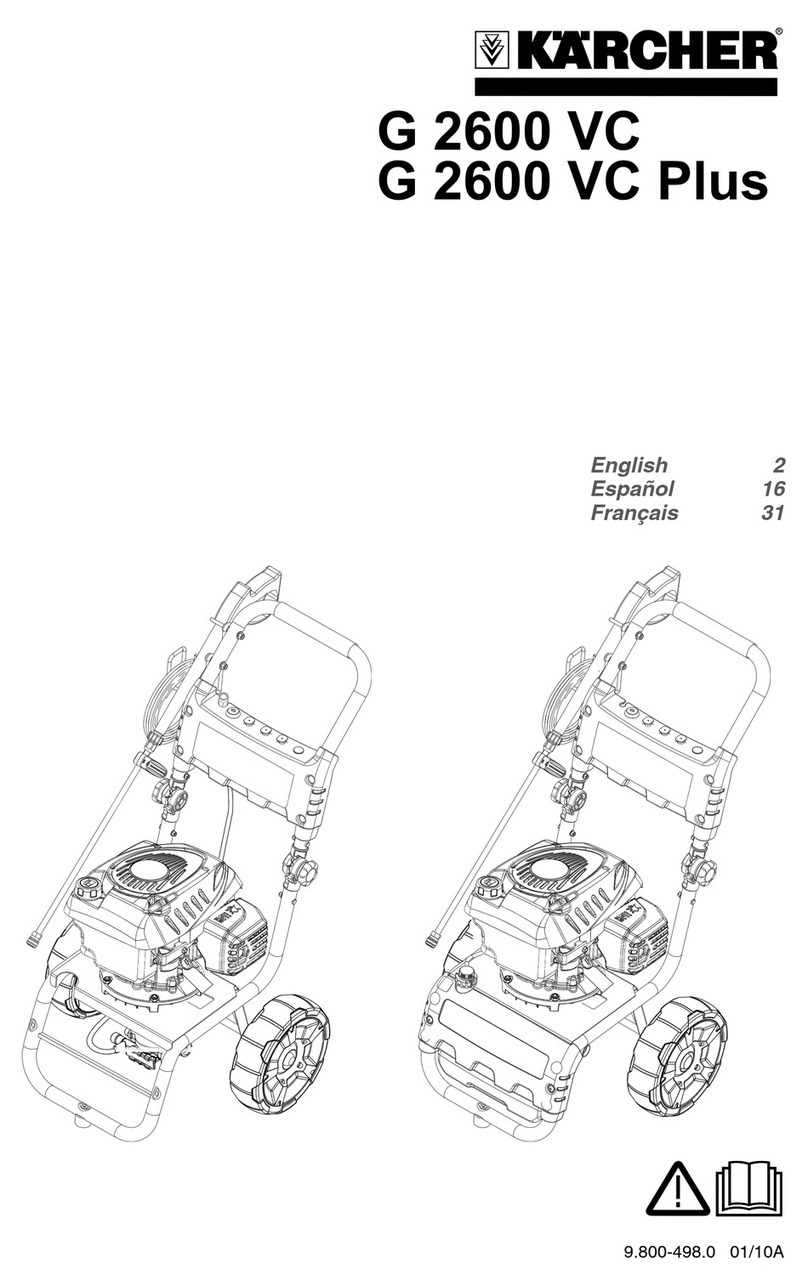ZLE (Where fitted)
5.6.1 For increased washing power, use the
rotary nozzle kit as follows:
5.6.2 Turn off the high pressure cleaner
5.6.3 Unscrew the adjustable head and fit the
rotary nozzle onto the lance.
5.6.4 Turn the high pressure cleaner back on.
5.7 RECOMMENDED CLEANING PROCE-
DURE
5.7.1 Dissolve dirt by applying detergent with
the fan jet to the dry surface.
On vertical surfaces, work from the bottom
upwards. Leave the detergent to act for 1
to 2 minutes, but do not allow to dry out.
Apply the high pressure jet, keeping the
nozzle at least 30 cm (10 in.) from the sur-
face, working from the bottom upwards.
Avoid allowing the rinsing water to run on
to unwashed surfaces.
5.8 STORAGE
5.8.1 Switch off the cleaner.
5.8.2 Turn off the water supply tap.
5.8.3 Discharge residual pressure by pressing
the trigger until no more water comes out
of the adjustable nozzle.
5.8.4 Engage the gun safety catch.
5.8.5 Remove the plug from the socket.
5.8.6 Operate the cleaner with non-
corrosive/non-toxic antifreeze before stor-
ing for the winter.
6MAINTENANCE
6.1 CAUTION! Before working on the
cleaner, disconnect the plug from
the power supply socket.
6.2 To ensure good performance, check and
clean the suction and detergent filters after
every 50 hours of operation. FIG.6A
6.3 Long periods of disuse may lead
to the formation of lime scale
deposits. Working through the hole on
the rear, RELEASE the motor using a
screwdriver (for models with this fea-
ture). FIG.6B
Then remove the screwdriver and pro-
ceed with the restart operations.
6.4 Clean the nozzle with the tool provided.
Remove the lance from the gun (FIG.6C),
remove any dirt from the nozzle hole
(FIG.6D) and rinse.
now plug in the cleaner.
The electric supply connection shall be
made by a qualified electrician and comply
with IEC 364. It is recommended that the
electric supply to this appliance should
include either a residual current device that
will interrupt the supply if the leakage cur-
rent to earth exceeds 30 mA for 30 ms or a
device which will prove the earth circuit.
CAUTION! The machine may
cause electrical disturbances
when starting.
4.6.1 If the motor stops and fails to restart, wait
2-3 minutes before restarting. THERMAL
CUTOUT TRIPPED
5USE
5.1 Turn on the water supply tap FULLY.
5.2 Release the safety catch FIG.5A, then
press the trigger for a few seconds to
allow air to escape and to discharge
residual pressure in the pipes.
5.3 Keeping the trigger pressed, push the
switch to start the motor. FIG.5B
5.3.1 When re-starting the motor, always
keep the trigger pressed.
TSS Models: In TSS models, (FIG. 5C) with auto-
matic delivery flow cut-off:
-when the trigger is released, the dynamic
pressure automatically cuts out the motor.
-When the trigger is pressed the pressure
drop automatically starts the motor and
the pressure is restored with a very slight
delay.
-For correct operation of the TSS, once the
trigger has been released it must not be
pressed again for at least 4-5 seconds.
For correct use of the TSS model cleaner,
do not leave the unit in automatic cut-off
status for more than 15 min.
5.4 USING DETERGENT
5.4.1 Fill the foam unit tank with detergent
(capacity about 0.5 lt.).
5.4.2 5.4.1 Set the adjustable head in the “FAN
JET” position, then fit the foam unit on the
head and fix it in position. FIG. 5D
5.4.3 Now distribute the detergent drawn in and
mixed with water.
5.5 CORRECT USE OF STANDARD
ACCESSORIES
5.5.1 The cleaner is equipped with a nozzle for
adjustment of the jet from concentrated to
fan. FIG. 5E
5.5.2 It is also equipped with the foam unit for
detergent distribution, with adjustment of
the quantity of detergent using the knob
M. FIG. 5D
5.6 CORRECT USE OF THE ROTARY NOZ-
9
English


